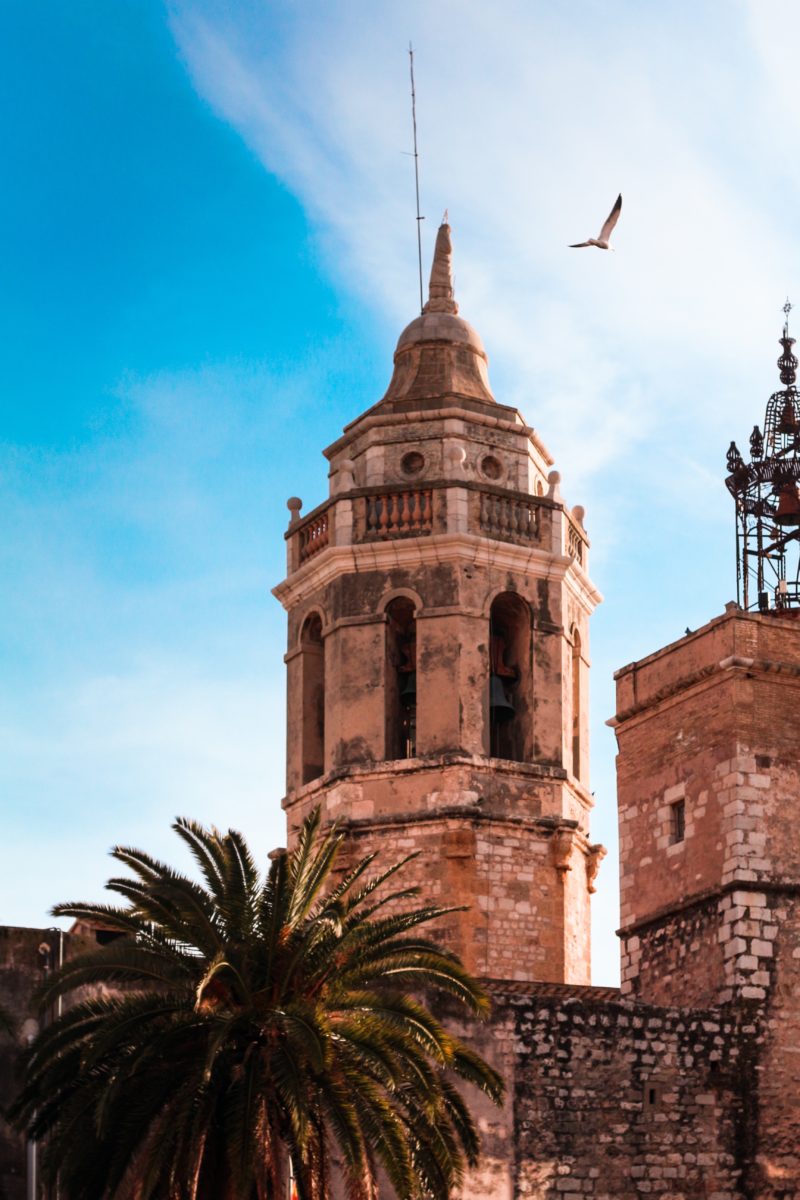After an exhilarating day on an electric bike tour through Spain’s Penedes wine country this past spring, one of my best friends and I were faced with an unexpected offer from our tour guide. For an extra €20, he’d drive us from our small inland village to Sitges, a quaint seaside town south of Barcelona (where we were staying for the week).
We looked at each other and shrugged. Sure! Why not? We didn’t have any other plans.

We drove thirty minutes through the Spanish countryside and were deposited among the quiet narrow streets before making our way to the ocean. We strolled on the beach and wandered to an over-half-century-old seafood restaurant with life-changing fried calamari.
Whenever I’ve traveled with a strict itinerary, I always wind up missing out on unique experiences or the chance to surprise myself—which, in the age of Instagram travel, is increasingly hard to do.
Of course, we’re all busy and want to make the most of every trip—but that doesn’t mean we have to plan out every single moment. In fact, I would argue that the less you plan, the more you’ll be able to maximize the experience of a place. You’ll be less focused on meeting the requirements of an itinerary, however good the outlined recommendations may be.
I think I’ve landed on the right balance of travel preparedness and leaving myself open to surprises. Rather than plan out an itinerary, I advocate a certain level of destination-readiness. See below for tools you can use (and mindsets to assume) to help you not plan your trip.

Before you go:
Google Maps Lists
This is paramount to anti-itinerary sanity. It puts all my options in one accessible place that fits naturally into my daily habits, whether I’m traveling or not. As you hear or read about places you want to go, look them up on Google Maps (on mobile or on desktop) and save them to an organized list. You can even color-code the destinations by food, history, shopping, etc. When you start to see how places cluster up, you’ll be able to better map out your time spent abroad. But most importantly, it’s the best way to keep options on hand when you want to make a decision on the fly.
Minimal Reservations
Make reservations only at places where it’s essentially required. Then, leave whole days open to decide what you want to do on the spot. Also prepare yourself for the potential that, should something more appealing present itself, it’s a-OK to skip out on a resy. This may sound stressful for the over-planners out there, but I promise it’s worth it. Breath easy—traveling is about getting out of your comfort zone.
Outfit Planning
If you’re going to commit to an anti-itinerary lifestyle, you need to dress the part. The best strategy is to be able to transition from day to night so you’re not worried about getting back to your hotel to change before you go out. Wearing all black usually accomplishes this by hiding sweat and feigning sophistication, and in today’s era of athleisure acceptance, some stylish sneakers will carry you from pounding the pavement to dancing the night away in most cases.

While you’re there:
Feel Out the Day
The thing I hate most about strict itineraries is that it doesn’t leave room for shifting moods and energy levels. But if you allow yourself to listen to your body and leave space for altering plans, you won’t feel like you need a vacation from your vacation. This is really where the Google Maps List comes in handy—if you’re hitting up museum row, but you’re feeling exhausted after just one stop, your list might have a cafe or bar to chill out and recharge.
Get Recs on the Ground
Back in Barcelona, my friend and I sipped natural wine at the rustic and cozy Bar Brutal. With its endlessly exciting menu and friendly staff, we realized we were in a special place and figured the best source for discovering equally enchanting experiences would be from the people who helped create this one.
When you leave space for exploration, you give yourself room to discover things you may not have stumbled upon through internet research or recommendations. Finding those experiences is truly easy—ask locals that you meet in places that you like. If I’m really vibing at a bar, I’ll ask the bartender where they recommend I go next. Bartenders are consistently great resources for knowing what’s new and interesting, and they love to send customers to their friends (but don’t forget to add the new recs to your Google Maps list).
Cross Reference
Asking a local is also an opportunity to cross-reference and adjust the list you’ve made previously. You can read every travel resource on the internet, but there’s no substitute for someone who lives and breathes a place every day. I particularly love to get a local’s opinion about a known hotspot; I’ll often find that they say, “Oh yeah, it’s fine, but that’s where tourists go. Locals go here for the same thing.” And usually for cheaper.
Of course, in either of these situations, this tip is much easier when you’re in a country with people who speak your native tongue. If you’re experiencing more of a language barrier, seek out an expat neighborhood or ask the concierge at a cool boutique hotel in the area.
Post-Trip:
Pay it Forward
One of the best things about Google Maps lists is that they are easily shareable—you can have it handy for friends and family once you’re back.
Look Forward
There is a chance you won’t be able to hit everything on your list—and that’s ok. The point is to maximize how in-the-moment you are and take yourself to expected places. Delight in knowing there are plenty of places you can go back to next time.

